








The signs were clear — the hay wagon signs that New York business owner and entrepreneur Raymond Rice put along Route 7 in Charlotte and other neighboring towns a few months ago, that is. They were so clear, it prompted some Charlotte residents and others in neighboring towns to call their local legislator and the
Vermont Agency of Transportation to investigate whether the banners placed on hay wagons along the major highway violated the state’s 57-year-old billboard law. Now, the drive along Route 7 to the New York border is void of the temporary fixtures, which one Charlotte resident called an “eyesore.” But still, a hay wagon See SIGNS on page 9
BRIANA BRADY STAFF WRITER
After Hinesburg’s Carpenter-Carse Library put out a call for people willing to volunteer and serve on its board of trustees, twice as many people as there are openings answered that call. Six people are on the Town Meeting Day ballot for three open seats.
Here are their thoughts on the election. Due to the number of candidates, answers have been edited for length. All terms are for three years.
Do you have any professional or volunteer experience that you would bring to your work with the board of trustees?

Katie Bailey: I have worked in the non-profit and community organization sector for over 20 years. I’ve taken on many roles within those organizations and currently serve as an associate director for a small non-profit in Winooski. I bring experience professionally and personally in strategic planning, collaborative practices, budgeting, program development and community organizing.
Victoria (Torie) Burns: I earned my PhD in English from the University of Iowa in 2023. While there, I spent three years working as the graduate assis-
See LIBRARY BOARD on page 12


Part of Champlain Valley School District’s Connecting Youth work includes youth empowerment and, last week, the students belonging to Our Voices Exposed represented the school district at the annual Vermont Youth Statehouse Rally, a statewide event dedicated to raising awareness about the harms of tobacco and nicotine use among young people.
Joining over 170 peers from across Vermont, Champlain Valley students marched from Montpelier’s Unitarian Church to the Statehouse, where they took the stage. On the Statehouse steps, they shared stories about how tobacco companies target young people, shared their perspectives on prevention efforts and advo-
More than 170 students from across Vermont marched on Montpelier last week to draw attention to the harms of tobacco use. Do
cated for health-oriented policies.
Beyond the rally, some students had the opportunity talk with local legislators, including Reps. Erin Brady and Angela Arsenault of Williston and Rep. Phil Pouech of Hinesburg. These moments provided an invaluable experience in advocacy and civic engagement, reinforcing the idea that their voices matter and they can drive real change.
“It was an inspiring day,”
Lynn Camara, Williston Central School’s Connecting Youth Student Assistance Program Counselor. “Our students made a meaningful impact.”
For more information about Connecting Youth’s Student Assistance Program, visit tinyurl. com/3weubfvt.


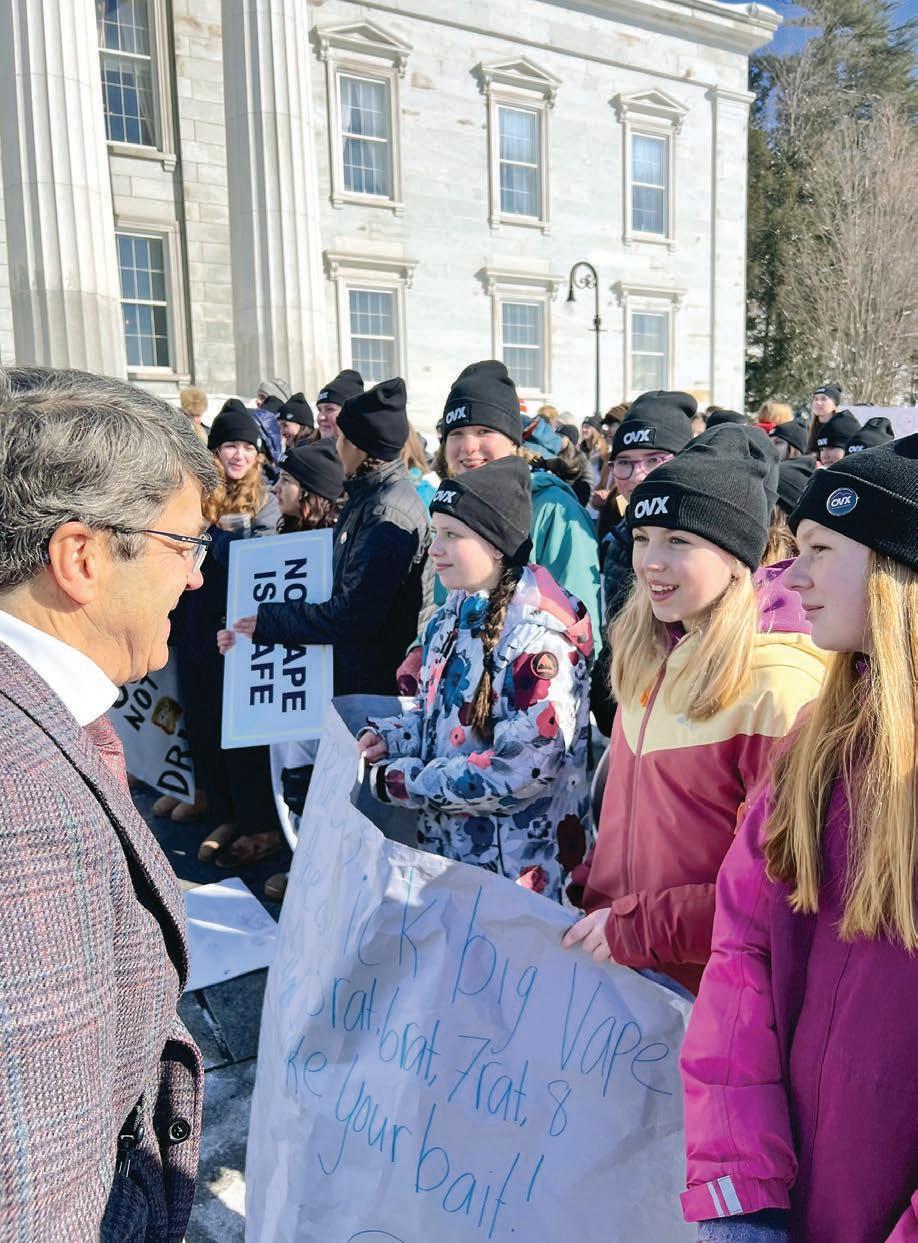




SAM HARTNETT COMMUNITY NEWS SERVICE
Via Community News Service, a University of Vermont journalism internship.
Salt can be found just about everywhere outside in the winter — cars, roads, sidewalks — but where does it all go come spring? The answer often is streams, rivers and lakes, something clean water advocates and scientists say is getting worse.
Chloride, a chemical that leaches into waterways from road salt, compounds in the environment, particularly in smaller streams and brooks near multiple roadways. Too much chloride can be toxic to aquatic life and corrode pipes and plumbing, among other things.
The citizen committee that advises the state on managing Lake Champlain recently told legislators that excess chloride in the watershed could soon require state or federal regulations.
“The chloride is really a looming thing that I don’t think most people realize … It’s coming hard here, and there’s going to be federal stuff coming down on this,” said Bob Fisher, member of the advisory committee and South Burlington water quality superintendent, before the House Committee on Environment late last month.
that detailed the rising chloride contamination across the state.
Over the last 30 years, the Winooski River has seen chloride levels more than double, Lake Champlain Basin Program chief scientist Matthew Vaughn said during the Feb. 4 meeting. As more and more waterways upstream of the river become impaired, those chloride levels have risen sharply, Vaughn said.
A speaker from AdkAction, a New York nonprofit that has run projects to reduce salt use in the Adirondack Mountains, described to committee members how it worked with road crews and citizens to tune equipment and prevent using more salt than necessary.
The nonprofit recommends public-private cooperation and teaching people ways to conserve salt when treating roads or driveways.
“Anywhere where we deploy these standards, and there’s buy-in, we’re seeing a 50 percent reduction in salt use,” Phill Sexton, technical advisor for the group, told legislators.
“The chloride is really a looming thing that I don’t think most people realize.”
— Bob Fisher
State regulators seemed to agree about the problem last year, when they stepped in to address Sunnyside Brook in Colchester routinely exceeding legal limits for chloride levels.
The state developed a plan last winter to reduce the chloride entering the stream and limit how much can be present in the water every day while still being safe. That limit, called a total maximum daily load, was the first in the state to regulate chloride in particular, officials said.
Now, Sen. Anne Watson, D/P-Washington, has introduced a bill to create a state program focused on curbing chloride contamination from road salt by better training salt crews.
The program, housed in the state Agency of Natural Resources, would provide education, training and certification for road salting across the state. Watson chairs the Senate natural resources committee, which has been discussing chloride contamination this session. Watson said she hopes the bill, S.29, can help reduce stress on wildlife as well as save contractors and municipalities money on salt expenses.
The Senate committee recently heard from various environmental organizations

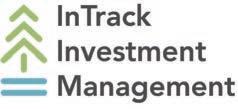
Over the last decade, the Adirondacks’ Lake George area has attracted much attention for its road salt reduction work.
For many years, about 30,000 tons of salt was used annually around the tourist destination, according to the Lake George Association, and some towns around the lake have reduced their winter salt use by as much as half each year.
Craig Digiammarino, manager of conservation and stewardship efforts at the Vermont Agency of Transportation, said in an email that officials are aware of the impacts road salting has on water quality and aim to avoid excess salt near impaired waterways. The agency’s snow and ice control plan describes, among other methods, using brine instead of rock salt.
Mixing road salt with water to produce brine can greatly lower the amount of chloride used because it helps melt snow and ice faster.
But much of the chloride entering the environment comes through private salting of parking lots, driveways and other property where there is little regulation, Tim Clear of the state Department of Environmental Conservation said in an interview.
Experts said people and companies salting private property might be using more salt than needed. According to the Lake Champlain Sea Grant Program at the University of Vermont, a 12-ounce cup of rock salt can effectively cover a 20-footlong driveway or 10 sidewalk squares.





• Stroll through the Grand Garden Display filled with flowering bulbs, shrubs, trees, and water features!
• Shop the Flower Show Marketplace with over 100 vendors related to horticultural/gardening/home/ accessories.
• Choose from over 30 educational seminars and workshops on a variety of topics.
• Experts on-hand all 3 days to answer your gardening and landscaping questions.
• Family Activity Room: Come dig for worms, plant a flower, and make a craft and enjoy Magicians Without Borders & No Strings Marionette performances.
• Local bookstore with a great selection of books to choose from.
• The Federated Garden Clubs of VT, North District will present a National Garden Club Small Standard Flower Show: “The Story of the Garden.”
• Plant Sale at the end of the show on Sunday. Helping clients navigate significant life events since 1992. 802-658-0625






Total incidents: 17
Vehicle Thefts: 3
Feb. 11 at 12:05 p.m., police investigated a report of online stalking.
Feb. 11 at 5:05 p.m., police investigated a report of an attempted fraud.
Feb. 11 at 5:15 p.m., police recovered a stolen vehicle out of Bristol at a residence on Richmond Road.
Feb. 13 at 8:47 a.m., police investigated a two-car motor vehicle crash on Mechanicsville Road that was reported late.
Feb. 13 at 11:42 a.m., officers assisted with traffic control for a tractor trailer truck that was stuck on Charlotte Road.
Feb. 13 at 1:30 p.m., an officer responded to a single car motor vehicle crash on Silver Street.
Feb. 13 at 4:35 p.m., police investigated a report of a stolen vehicle on Hollow Road.
Feb. 14 at 7:42 a.m., police investi-
gated a retail theft at Jiffy Mart on Ballard’s Corner Road.
Feb. 14 at 1:47 p.m., police conducted a welfare check on Kelley’s Field Road.
Feb. 15 at 7:46 a.m., police assisted a resident with a VIN verification.
Feb. 15 at 10:15 p.m., police investigated a single-car motor vehicle crash on Pond Brook Road that was reported late.
Feb. 16 at 4:12 p.m., an officer responded to a single-car motor vehicle crash on Richmond Road.
Feb. 17 at 7:10 a.m., police investigated a parking issue on Mechanicsville Road.
Feb. 17 at 2:40 p.m., police recovered a vehicle that was reported stolen on North Road at a residence on Richmond Road.
Note: Charges filed by police are subject to review by the Chittenden County State’s Attorney Office and can be amended or dropped.
Serving the community of Charlotte & Hinesburg
A publication of Vermont Community Newspaper Group LLC thecitizenvt.com
Advertising
Wendy Ewing wendy@shelburnenews.com (802) 238-4980
Advertising Director
Judy Kearns judy@otherpapersbvt.com (802) 734-2928
Editor Tommy Gardner tommy@stowereporter.com (802) 253-2101 x25
Staff Writers
Aaron Calvin Liberty Darr
Patrick Bilow Briana Brady
Production/Design
Stephanie Manning
stephanie@shelburnenews.com
Kristen Braley kristen@stowereporter.com
The Citizen is published weekly and
General Manager Katerina Werth katerina@stowereporter.com
Billing inquiries Leslie Lafountain leslie@stowereporter.com (802) 253-2101
Advertising submission deadline: Friday at 5 p.m. advertising@thecitizenvt.com classifieds@thecitizenvt.com
Editorial submission deadline: Friday at 5 p.m. news@thecitizenvt.com
Calendar submission deadline: Friday at 12 p.m. news@thecitizenvt.com
Contact: 1340 Williston Road South Burlington, VT 05403 (802) 985-3091
BRIANA BRADY STAFF WRITER
In a couple of weeks, a ballot measure will ask voters in Hinesburg to decide whether to allow cannabis dispensaries to set up shop in town. If the measure passes, Hinesburg will join the six other municipalities in Chittenden County that allow retail cannabis and will be the second smallest town in the region to do so — Bolton passed a similar measure in 2022.
Recreational marijuana sales have been legal in Vermont since 2020, but state statute requires
towns and cities to opt-in to allow sales within their municipalities. So far, 78 of Vermont’s 247 cities and towns have opted in.
Last September, Catherine Moller, a Hinesburg resident and owner of SidePony Boutique on Mechanicsville Road, approached the selectboard about putting retail cannabis on the town meeting day ballot this year. Last month, the selectboard voted to put it to the town.
Surrounding municipalities such as Shelburne, Richmond and Charlotte do not currently allow weed sales. According to Moller, this could potentially make Hines-
burg a local destination for the product.
“Having a business that might draw more attention into town is good for all local businesses” Moller said.
If residents vote in favor of allowing retail cannabis, however, it may still be some time before Hinesburg sees an actual store. In November, the state put a hold on new retail cannabis applications, citing an uneven geographic distribution of stores and an oversaturation of the market.
The Hinesburg Fire Department has recognized the following members who celebrated milestones with the department:
• Life member Randy Thompson, 40 years
• Captain Ed Waite, 25 years
• Captain Lucas Charbonneau, 15 years
• Senior Firefighter Jonathan Titus, 10 years
• Firefighter/advanced EMT Connor Contois, 5 years
• EMT Lyn Porter, 5 years
• IT specialist Shayne Waite, 5 years
Fire chief Prescott Nadeau reserved a special highlight for
life member Randy Thompson “for 40 incredible years” as an active member of the Hinesburg Fire Department. Thompson has served as the training officer, 1st and 2nd lieutenant, captain, and 1st and 2nd assistant chief in his tenure, and he remains active with life membership and as a senior firefighter.
“We’re fortunate to have such dedication from our firefighters and emergency medical technicians,” Nadeau said. “Please join me in congratulating these members for their service to the department and greater community as a whole.”
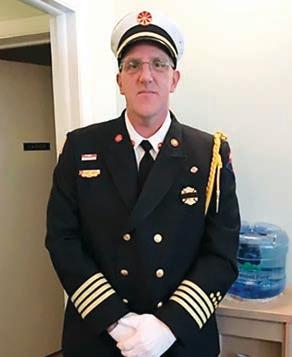






I’m on the House Committee on Government Operations and Military Affairs. Last week, we had a joint meeting with the Senate government operations committee. Deputy Secretary of State Lauren Hibbert and elections director Seán Sheehan were there, too, to talk to us about what needs to happen elections-wise if we were to implement Gov. Scott’s education reform plan — specifically, what they need and what we need to do in order to create a voting system for the new school districts. It was kind of wild. We were talking about forming voting districts, essentially, which would be the new school districts, but we don’t know how many there will be or where they’ll be. We talked about forming wards within those districts so we can vote for school board members, but we don’t know how many wards there will be, and we don’t think they’ll be called school boards anymore.
and the ingredients we have are cans of expired refried beans and boxes of Kraft Mac and Cheese.
As the governor and Education Secretary Zoie Saunders slowly roll out his plan to reform education and education funding in Vermont, one thing is clear: slowly is too slow. We typically adjourn in mid-May, which means that, in three months from now, we need to have a concrete plan in place if we have any hope of implementing this in two years, which the governor said is his goal.

We don’t even have the plan in bill form yet. Once there’s a bill, there will be committee hearings in both the House and Senate — the education, government operations and appropriations committees in both chambers, the House ways and means committee and the Senate finance committee.
have the entire session to work on it. Letting us know in February that school choice is going to be a feature of this new plan was, in my opinion, not cool.
Here’s my problem with school choice: The governor’s plan allows each school district to designate a choice school that students from the entire district can then apply to by lottery. Private schools are eligible to be a choice school and would then get money from the state for each student that gets in by lottery.
If private schools start getting money that should be going toward supporting and bolstering our public school system, the public schools are going to suffer. And when the public schools don’t get adequate funding or participation from a diverse group of students, schools are going to start being perceived as “good” or
“bad” and then inequity creeps in and eventually decimates public education.
This seems dramatic, but I recently went to a conference with legislators from around the country and a state representative from Delaware told me, when I was discussing my fears that we were moving in this direction, that school choice destroyed public education in her state.
I want our students to be academically successful. I wish there was a way to provide better social services and mental health support to students using money from outside of the Education Fund so that we could use all our school budget money for education alone. But that’s not where we are right now.
As we draw the lines for new school districts and figure out how to create an election system for
an education system that doesn’t exist yet, I’m keeping the students at the forefront of my mind. I went to Charlotte Community School and Champlain Valley Union. My kids went to CCS and two are still at CVU.
Many things have changed over the years, and we’re obviously getting a big shake-up in the years to come. I just hope we’re going to come out at the end with something that’s affordable and manageable but also does what we’re supposed to do: educate these kids.
If you have questions or concerns, I can be reached at 917-887-8231 or cevans@leg. state.vt.us.
Chea Waters Evans, a Democrat, represents Charlotte and Hinesburg in the Chittenden-5 House district.
We also don’t know when we’ll be voting on school budgets, but we have to figure out before June how that voting will work.
It’s like someone asking you to create a menu for a gourmet dinner, but you have no idea what ingredients you’ll have. Or it’s like a twisted version of Iron Chef,
Those hearings will involve testimony from dozens and dozens of experts on all kinds of topics relating to education outcomes, classroom size and school choice experts, budgeting and taxes, municipal elections, teachers and administrators and students and a lot of other important interested parties.
I don’t see how it’s going to happen, but I guess it will. We don’t really have a choice. I do wish this plan had been presented all at once, in January, the first week we came back, so we could
critically
Mary
Recommendations from the Act 167 report in Vermont state that the University of Vermont Health Network “should reevaluate whether its medical education and research programs are contributing to better health outcomes for Vermonters.”
The report asks how relevant
UVM’s research is to the health needs of Vermonters and questions the benefit of time spent by the health network’s physicians on research. It also asks whether the time spent by physicians on these activities helps to train the next generation of physicians in Vermont. I would like to address these questions within the context of my experiences as a physician scientist at the UVM Medical Center.
I began my career at UVM as a medical student in the 1980s and completed my residency in internal medicine and fellowship in hematology and cardiovascular research in the early 1990s. Owing to the outstanding academic environment here, I made the decision to stay there and serve fellow Vermonters
See CUSHMAN on page 7



482-5777
In Musing
Carole Vasta Folley
I find it appalling that Brandy Melville exists at all, let alone here in our own state. You can be sure I’m not talking about a person and instead a multinational fast-fashion clothing company that’s now open on Church Street in Burlington.
Among the many reasons to be disturbed are the extensive allegations that have been made against the Brandy Melville company. These include accusations of racism, sexual exploitation and discriminatory work practices, along with contributing to the massive environmental impact of cheaply produced clothes. There’s even a documentary, “Brandy Hellville and the Cult of Fast Fashion,” directed by Eva Orner, who says of the company, “They
are racist, sexist, antisemitic. They exploit young girls. And that’s really just the tipping point.”
For those who might not know, Brandy Melville’s infamous claim to fame is that they sell one size. Extra small/small. That’s right. The entire company promotes a “skinny” physical aesthetic. And, sadly, it’s all pointed toward one demographic: teenage girls.
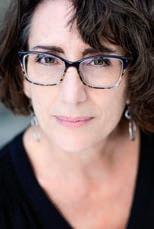
Apparently, Brandy Melville doesn’t even need to advertise traditionally. As an early adopter of influencer marketing, social media takes care of that. Currently, the company has over 3 million followers on Instagram. Time Magazine reports, “… when it came to who they featured on their social accounts, Brandy Melville seemingly had a narrow vision; they often selected girls that fit a certain aesthetic — young, thin and white, often blonde and usual-
ly with long hair.”
This company’s “one-size-fitsall” ethos is purposefully meant to be exclusive. Forget about the impact on young women, like singer-songwriter Billie Eilish, a nine-time Grammy and two-time Oscar winner who publicly shared her personal experience with the brand and describes it as harmful: “They only sold clothes in one size. I was chubbier and I was obsessed with these clothes, but I’d buy a shirt and it wouldn’t fit me. That’s when my body problems started. I was around the age of 10 or 11.”
By the way, Brandy Melville isn’t even a real person. The company’s founders, Silvio Marsan and his son Stephan, invented “her” as a brand name. I don’t know about you, but I find it unsettling that men are marketing not just how girls should dress, but more dastardly, how they feel about their bodies. No doubt they profit by instilling unrealistic body standards on young teens.
Of course, Brandy Melville
Guest Perspective
Kevin Chu
Personal growth is universally celebrated. We encourage people to pursue education, seek professional development and advance in their endeavors. We applaud entrepreneurs who take risks, innovate and build successful enterprises. We praise people who overcome adversity and become more resilient in the process.
Yet, when it comes to Vermont’s communities, there is hesitation to embrace the same idea of growth, with some even calling for degrowth. Population growth and new housing developments are treated as threats that need to be protected against. Protection of what and for whom? What if the real danger is not growing?
We celebrate growth on an individual level — let’s extend that sentiment to our state as a whole.
What if we don’t?
The challenges Vermont faces today — workforce shortages, the housing crisis, rising costs for health care and education, and a growing tax burden — are symptoms of stagnation. The root causes are lack of suffi-
cient growth in our working-age population and new housing over several decades.
In doing nothing, Vermont risks either increasing cost of living or uncomfortable reductions in programs, services and infrastructure that Vermonters rely on. There’s already evidence of this from double-digit property tax increases to cuts in transportation, proposed reductions in hospital services, and school district consolidation. These are the options if Vermont doesn’t grow; these are the impacts of choosing scarcity.
Don’t like these options? Many Vermonters agree with you. Our polls show that more Vermonters support population growth and increased housing than oppose it.
What’s the alternative?
Choose abundance.
We can make Vermont more affordable AND maintain critical services with growth. A larger working-age population strengthens the workforce. This supports business success and can lead to higher wages. Growing the population also means more taxpayers rather than more taxes. Increased housing improves affordability and accessibility for current and future Vermonters. Growth
isn’t the only company that hawks dangerously unhealthy values regarding weight. Take Victoria’s Secret’s recent controversy, for example. The New York Times wrote this about the lingerie company in 2020: “Two powerful men presided over an entrenched culture of misogyny, bullying and harassment.” Sounds familiar? By the way, there’s no real Victoria either.
Certainly though, the Brandy Melville company has upped the ante, not only by proudly selling one small size of clothes, but in doing so, ripping the mask off what our culture has been telling girls all along: be small. And the price for that is steep.
The National Organization for Women reports the following: At age 13, 53 percent of American girls are “unhappy with their bodies.” This grows to 78 percent by the time girls reach 17. The organization adds that 40-60 percent of elementary school girls are concerned about their weight or about becoming “too fat,” and 46 percent of 9-to-11-year-olds are “sometimes” or “very often” on diets. In addition, the Center for Mental Health Services reports 90 percent of those who have eating disorders are women between the ages of 12 and 25. This is the exact demographic Brandy
ensures that our communities remain viable places for people to build their futures while fostering greater sustainability and resilience. In depopulated areas, growth can lead to revitalization and the utilization of existing resources.
These are the potential benefits of abundance.
How do we get there from here?
The first step is to move beyond endless debates about how we got here or whose fault it is and start focusing on collaborating to do something about it. We need solutions, not scapegoats.
Then we must make a choice. Do we accept scarcity and adapt to rising costs or declining services, or do we choose a future of abundance where strategic growth makes Vermont more affordable?
If we choose affordability and abundance, the Vermont Futures Project economic action plan lays out a data-informed roadmap for making this vision a reality.
Let’s embrace a collective growth mindset. Our future depends on it.
Kevin Chu is executive director of the Vermont Futures Project.
Melville is targeting.
Let’s face it, our society has long been messaging girls and women through clothing. And, by that, I mean controlling. Fashion is an industry focused on women and yet historically designed for the male gaze. The global apparel market is now worth $1.84 trillion dollars and yet women are lucky to have pockets in their clothes, all while they deal with discriminatory sizing, weight bias and relentless advertising campaigns that market “sexy” as a necessary function of apparel.
It is an intentional ever-growing scourge continuing to convey that women and girls should be smaller, take up less space and spend an inordinate amount of time worrying about what they wear, often endeavoring at all costs to look like the images manufactured by male-led, fat-pocket corporations.
Unfortunately, the teenager that outgrows Brandy Melville clothing — either in size or in recognition of their demeaning brand — will not be a problem for this retailer or others. There’s always the next generation of young girls.
Carole Vasta Folley is an award-winning columnist and playwright. Visit carolevf.com.
The growth machine has arrived in Vermont
To the Editor:
First the Vermont Chamber of Commerce created the Vermont Futures Project to convince us that a “data-informed” examination of our economic woes requires us to increase our population by 150,000 in the next 10 years to reach a goal of 802,000.
Then the Vermont Housing Agency agrees and states the “need” for 30,000 houses by 2030 would be necessary to approach that population goal and now nurtures the group Let’s Build Homes, also supported by the governor.
This was followed by the secretary of the Vermont Agency of Commerce and Community Development assuring us that “adding more housing without losing the Vermont we love” can be accomplished.
And then the program director of Sustainable Communities states that “Vermont can both grow housing and protect our natural resources” and that we need to “prioritize sustainable growth.”
Let’s Build Homes states that “we must embrace a vision of
Vermont’s future that balances our cherished natural beauty with the need for growth.” The Vermont Futures Project provides no data on the environmental impacts, the tax consequences or any other of the downsides of the growth.
Neither group addresses how this growth would help us meet the goals of our Global Warming Solutions Act to decrease our greenhouse gas emissions to 40 percent of 1990 levels by 2030. What do these voices and the governor have in common? Growing the gross domestic product and the tax base, and a disregard for how Vermonters may see their state’s future. The Vermont Futures Project states that “Vermont needs more people; more people need Vermont” and Let’s Build Homes states that “We hope…to change the way Vermonters think about the future of their state.”
And the governor in his budget address states the “need to step up our efforts to provide more permanent homes” and “attract more people to our state.” These are not needs. They are


Charlotte’s fire and rescue squad recently opened its doors in an open house to kids and teens, with department personnel showing off all the vehicles and equipment they use to respond to emergencies.
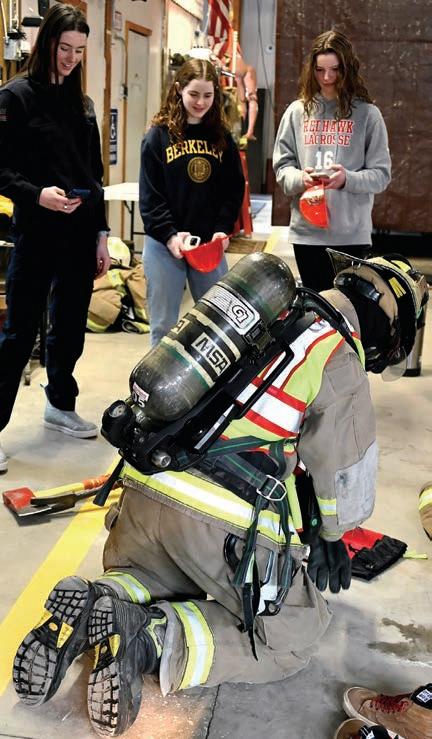
continued from page 6
wants of the development industry and its friends.
None of these groups or individuals speak of natural resource limits to development, nor of sustainable limits to community size for a mineral and fossil energy constrained future.
Shouldn’t these groups and the governor be interested in what Vermonters would really want? To rectify this disconnect, I suggest
CUSHMAN continued from page 5
as a physician, and to conduct research.
I started my clinical career as the only specialist in care of patients with abnormal blood clots called venous thrombosis — deep vein thrombosis and pulmonary embolism — a leading type of potentially fatal cardiovascular disease. Thus, I am an example of how research can attract physicians who train at UVM to remain in state to serve Vermonters.
In fact, statistics from my department, the Department of Medicine, from 2016 onward show that greater than 50 percent of the residents we train remain in Vermont. This could be lost if we de-emphasize research training.
Three decades later, I have overseen a thriving research program that has garnered tens of millions of dollars of research funding from the National Institutes of Health and included research studies that specifically address the health needs of rural populations. These research dollars directly contribute advancing science, and training the next generation of researchers, but also in helping our local economy and providing stable jobs.
We have made many breakthrough discoveries, including that excessive body weight and oral contraceptives increase risk for venous thrombosis, as well as multiple causes of racial disparities in stroke affecting Black Americans. Our original research group of three faculty is now 15 faculty at the UVM Larner College of Medicine.
Of these researchers, seven are physicians and seven were trained at UVM. Thus, from my own personal experience, research and educational activities of UVM Medical Center physicians helps to train the next generation of physicians who will serve Vermonters.
On the clinical side, based on successful research and building a program for care venous thrombosis and bleeding disorders, we now have a thrombosis and hemostasis program that is staffed by six dedicated hematologists, three nurse practitioners, one physician’s assistant and two nurses.
the legislature create a statewide citizens assembly. Citizens assemblies (citizensassemblies.org) can be more representative and deliberative than public engagement, polls, legislatures or ballot initiatives. They have generally been successful worldwide and further participatory democracy.
Wolfger Schneider Charlotte
We see about 1,500 new patients from our region every year, a number that is rapidly growing with the aging of our population. We provide holistic care to these patients to improve their vascular health and apply the most recent research-based knowledge to their care, including from our own research.
One can’t discuss impact of an academic medical center without mentioning the COVID19 pandemic. Starting in spring 2020, I participated in conducting National Institutes of Health-funded rapid response clinical trials on treatments for COVID-19 in hospitalized patients. Results led to the rigorous testing of different blood thinning medications and new clinical practice guidelines less than one year after we started, improving recovery from this deadly infection.
Bridging from this research, we are now studying causes of long COVID, and we aim to develop knowledge that will bring treatments to the community of patients in Vermont suffering from the long-term debilitating effects of the virus.
If the UVM Health Network was to severely reduce or eliminate its research and educational activities, it will prevent stories like mine from being told. Ultimately, this will reduce the number of physicians trained at UVM who remain in Vermont and reduce the benefits that an academic environment brings to the health of Vermonters. We will also lose our ability to train the next generation in research.
While we all agree that we must address issues of access to and the rising costs of health care, we should not undertake short-term solutions that have long-term detrimental effects for the health care and health of Vermonters.
Dr. Mary Cushman is a professor, vice chair of medicine and co-director of the Vermont Center for Cardiovascular and Brain Health at the University of Vermont Larner College of Medicine, and director of the thrombosis and hemostasis program at the UVM Medical Center.
Shelburne March St. Patrick’s Day Age Well Luncheon
St. Catherine of Siena and Age Well are teaming up to offer a St. Patrick’s Day luncheon on March 11 for anyone 60 or older in the St, Catherine of Siena Parish Hall, 72 Church Street in Shelburne. The check-in time is 11:30 and the meal will be served at noon. There is a $5 suggested donation.
Menu: Irish stew with corned beef, potatoes, cabbage, carrots, onions and celery, green leaf salad, buttermilk biscuit and “leprechaun cake. Deadline to register is March 5. Contact: Molly BonGiorno, Nutrition Coordinator at: P 802-662-5283 or email mbongiorno@agewellvt.org
Artist plays 76th town on clean energy concert tour
David Feurzeig, a composer, pianist, and UVM professor of music, will be performing one of his “Play Every Town” concerts at the Williston Federated Church, 44 North Williston Rd. Williston, on Sunday, Feb. 23 at 3 p.m. Feurzeig has performed concerts around the world and has received numerous awards and prizes for his work. However, in response to the climate crisis he has forsworn tours requiring fossil-fuel intensive flying. Instead, he will “travel to the rest of my gigs by public transit or in my solar-powered EV.” In
addition, he wants to support the vibrancy of Vermont’s village centers and downtowns by performing live music in every town in Vermont. Williston will be town number 76 out of the 252 Vermont towns on his list for concerts over the next few years.
The concert is free, though Feurzeig requests donations to a local or state environmental organization. For the Williston concert, the beneficiary will be 350Vermont, Vermont’s chapter of 350.org.
For a third consecutive year, the Children’s Literacy Foundation is challenging young writers in Vermont and New Hampshire to tell an original story using only two sentences. The theme of this year’s contest is “Love,” and entrants are encouraged to write about anything that evokes that sentiment for them.
CLiF’s Two-Sentence Story Contest is free to enter and open to all Vermont and New Hampshire children ages 12 and under. The winning submission in each of four age groups will be awarded a five-book mini-library curated to the recipient’s reading level and interests.
Last year’s contest, held in the weeks leading up to the total solar eclipse on April 8, asked children to “tell a story that takes place in the sky.” CLiF received over 900 entries from across Vermont and New Hampshire. In 2023, the


inaugural Two-Sentence Story Contest challenged young writers to “tell a story about winter,” and drew over 700 entries.
For full contest guidelines, as well as free supplementary materials for educators and caregivers, visit clifonline.org/ clifs-2025-two-sentence-storycontest. Entries must be received by email or postmarked by March 14.
The Vermont Mandolin Trio, comprised of Matt Flinner, Jamie Masefield and Will Patton, will join Town Hall Theater’s Wintertide Music Series on Friday, Feb. 28. The trio brings together three of Vermont’s finest mandolinists for a rare evening of bluegrass, jazz, and roots music. Joined by journeyman bassist Pat Melvin, the group performs music of Bill Monroe, Django Reinhardt, J.S. Bach and everything in between. Masefield’s origin is in traditional New Orleans Jazz. Between 1996 and 2006, Masefield toured the country with his group, the Jazz Mandolin Project. Masefield is also a dry-stone mason living in Monkton Patton graduated from Middlebury and has traveled far during his music career, gaining influence from time spent in Brazil, the Caribbean, and Paris.
Grammy-nominated Flinner has been playing banjo and mandolin from the start and dedicated himself to Bluegrass from
a young age. Living in Ripton, Flinner has spent the last several decades of his life touring with the Matt Flinner Trio and the Modern Mandolin quartet.
Tickets $15-$30 at townhalltheater.org or call 802-382-9222.
‘Lost Nation’ has Vermont viewpoint on Revolution
Jay Craven’s newest film, “Lost Nation,” will be screened at the Grange Hall Cultural Center Saturday, March 1 at 7 p.m. and Sunday, March 2, at 2 p.m. Craven will introduce the film and lead a post-screening Q&A.
“Lost Nation” is a Revolutionary War-era action drama set in the early upstart Republic of Vermont and stars Irish actor Kevin Ryan (“Copper,” “Harry Wild”) as Vermont founding father and rebel schemer Ethan Allen.
“Lost Nation’s” parallel and intersecting story features Kenyan actress Eva Ndachi (“Beautifully Broken”) as Lucy Terry Prince, whose poem, “Bars Fight,” about the 1746 Deerfield Massacre, is the first known work of African American literature.
Vermont actors Rusty DeWees and Ariel Zevon play Guilford Yorker leader Asa Locke, and Ethan Allen’s wife Mary Brownson Allen, respectively.
“Lost Nation” is Craven’s 10th feature film. His work has shown at Sundance, Lincoln Center, The Smithsonian, La Cinémathèque Française, Cinemateca Nacional de Venezuela, Constitutional
Court of Johannesburg, and more than 500 cities and towns across the U.S. and 53 countries. His 1993 film, “Where the Rivers Flow North” was a finalist for Critics Week at the Cannes International Film Festival.
Middlebury Acting Company presents “The Absolute Brightness of Leonard Pelkey,” by James Lescene, at the Town Hall Theater in Middlebury, March 13-23.
Directed by guest director Terrence O’Brien, and starring local actor Andrew Ritter, the show tells the story of a gay teenager’s disappearance in a small New Jersey shore town. Ritter plays the detective who investigates his case, along with all the other townspeople he encounters as he unravels the story of the missing boy, Leonard Pelkey. Ritter is an actor, director, teacher, writer and producer who spent over 20 years working in Chicago with companies like The Second City, The improv Olympic, & American Blues Theater. He is a graduate of Middlebury College and is the owner and artistic director of Interact Creative.
Terrence O’Brien is the founding artistic director of Hudson Valley Shakespeare Festival. Tickets are available through the Town Hall Theater box office at 802-382-9222 or app.arts-people.com/index.php?show=269167
sporting a “Rice Farm and Tires” banner is likely to be the first thing you see upon crossing the border into the Empire State.
The whole debacle is shedding some light on one of Vermont’s most unique and antiquated state laws. What if the sign is on wheels? What if it’s not technically a billboard? What if it’s a banner zip tied to a hay wagon?
For the unofficial sign guy in Vermont, John Kessler — general counsel for the Agency of Commerce and Community Development — the answer, in this situation, was black and white.
Kessler explained it’s not uncommon for VTrans to get complaints about signs, but they are usually situations that can be sorted out at the district office level. It’s not every day the complaints make their way up to Kessler, who has over 35 years of institutional knowledge about all things signs in Vermont. He’s also chair of the seven-member Travel Information Council.
“A sign for a business that’s not located there, that’s black and white, it’s not allowable,” he said.
Vermont’s
seems like a good way of advertising.’”
A farmer by blood and trade, Rice turned to the tire business roughly nine months ago after a shop in Vermont quoted him $1,800 for a tire that needed to be replaced on one of his farm rigs. When he learned from a friend that he could buy the same tire for roughly $400 cheaper elsewhere, the wheels in his mind started turning.
While he’s had his hand in farm operations since his youth, his most recent hay business was stalling and the tire business, in more ways than one, just landed in his lap.
The signs, he said, were a way to keep the business coming and with that, also the money.
“I don’t want to be the resident a--hole,” he said. “But I can tell you right now, I’m scared to death that I can’t meet payroll. I mean, we’re only eight or nine months into this thing. It takes a lot to get this started, and this is scary.”
out my front window. We have a natural barrier, but really, we’re in the Champlain Valley.”
— Raymond Rice
But Rice, the New York business owner and frequent Vermont visitor — he lives roughly 20 miles from the border — argues that his business provides services across Lake Champlain, with a majority of his clients from Vermont.
Although Rice took the signs down last Thursday in the middle of a small snowstorm, he said the idea started brewing as a creative and cost-effective way to advertise his tire business. While the signs on the side of the road — which cost him roughly $300 per wagon — were a clever way to make travelers aware of the services he offers, they were all placed on private property, owned mostly by his farmer friends, strategically in areas where many of his clients would need him.
Not only are most of his clients from Vermont, but his tire service offers on-site help, meaning he technically is providing the service a lot of the time right here in Vermont.
“I don’t have the money for radio. I don’t have money for television,” he said at his shop in Westport, N.Y., which doubles as his house. “I’m doing everything I can do as Rice Farm and Tires on Facebook, but they always want you to boost your ads and all this stuff, and that costs money. So how do you advertise? And so, I was like, ‘Well, you know, this

He said his mind was blown receiving emails from residents who were angry, not just about the disruption to scenic views, but that he wasn’t a Vermont business.
For one Charlotte resident, Scott Wilson — who declined to be interviewed — the signs were enough of an annoyance to email Rice and request he remove them, adding that the “billboard on wheels” has caused several people on social media to encourage business elsewhere.
And according to Rep. Chea Waters Evans, D-Charlotte, the outcry from her constituents was enough to bring her to the Charlotte selectboard meeting earlier this month to notify the town’s government about the signs.
“Put in your phone and see how far it is to Charlotte,” Rice said, pointing to Camel’s Hump peak poking out of the clouds in perfect view from his shop “Vermont’s out my front window. We have a natural barrier, but really, we’re in the Champlain Valley.”
A notice of law violations sent to Rice from a VTrans project manager, David Hosking, earlier this month told Rice he needed to remove the signs within 14 days from receiving the letter. According to Kessler, statute says that violations could cost $100.
For Rice, who loves his scenic views just as much as the next person, living in a rural area without much commerce requires him to get creative when it comes to
gathering clients, especially since the dirt road he lives on nearly washed out during flooding this summer forcing customers to drive even greater distances to reach his shop. And even more so, since there’s only roughly three dairy
farmers left in his county. Sometimes, the only way to look is across the pond, he said. With the signs down, and with some new attention coming his way, Rice was already cooking up ideas for new business.
Friday APRIL 4 8:30-11:30am
Tour our campus, meet teachers, and get information for the 2025-26 school year at Trinity Baptist School, a K-12 Christian school, and Little Lambs Preschool for 3 years to Pre-K.
“Did you like our hay wagons? Did you dislike them? Either way, mention it and save 20 dollars off an alignment for any alignment scheduled from now until the end of March,” reads a Facebook post from the company.









LAUREN READ CORRESPONDENT





The Champlain Valley gymnastics team came in third place in Saturday’s Vermont high school state championship.
Essex captured the state title for the second year in a row and St.
Johnsbury finished in second place.
Leah Fortin finished in third place on the floor, seventh on the vault and tied for eighth on the beam to pace the Redhawks.
Warner Babic was fifth on the beam and tied for sixth on the vault, while Cadence Haggerty and McKenna Lesage each tied for sixth on beam and tied for eighth on the floor.
Gabrielle Serafini rounded out the top CVU finishers with a seventh-place finish on beam.
Boys’ hockey
Essex 2, Champlain Valley 1: Champlain Valley attempted to make a comeback but ultimately fell to Essex on Saturday in high school boys’ hockey.
Jack Bryan had the goal for the Redhawks, who trailed 2-0 after the first period. Ethan Whitcomb and Ezra Zieter each had an assist.










Jessie McCray stopped 23 shots in goal for CVU.
















Boys’ basketball
Champlain Valley 47, Burr and Burton 36: Champlain Valley pulled out a win over Burr and Burton on Friday in high school boys’ basketball.
Owen Scott had 14 points to pace the Redhawks, while Luke Allen added 10 points and four rebounds.
Adrian Paliling chipped in with nine points, four steals and four assists for CVU.
CANNABIS continued from page 4
The Legislature has instructed the Vermont Cannabis Control Board to create rules that promote geographic distribution.
“The state is rethinking (retail licenses), and it looks like they’re going to give licenses based on population,” selectboard chair Merrily Lovell explained at a selectboard meeting last month as the board discussed the measure.
The selectboard also discussed how potential revenue from allowing cannabis sales would be impacted by the town vote against a local option tax in November.
A local option tax adds an additional 1 percent tax to sales made in a town, and, after getting processed by the state, 70 percent of that money goes back to the town. For municipalities that allow marijuana sales, a local option tax can create additional revenue from those sales. However, without the tax, Hinesburg would not see that same return.
able retail space in Hinesburg for a dispensary to rent.
Moller sees things differently.
“Knowing the number of developments that are due to come into Hinesburg that are slated to have residential and commercial space, at some point there’ll be more opportunity, and it seems foolish to not start to lay the groundwork for that opportunity,” she said. “Why keep pushing back options?”
“I sure wish it’d be taxed in the same vein
as alcohol, you know, instead
of a screwdriver at the
hardware store, right?”
— Paul Lamberson
Local option taxes are broken into three categories that towns can opt for individually: general sales, meals and alcohol, and room rentals. Although an option tax goes hand in hand with creating revenue from cannabis sales, selectboard member Paul Lamberson, took issue with the state categorizing cannabis with general sales.
“If cannabis were to show up, gosh, I sure wish it’d be taxed in the same vein as alcohol, you know, instead of a screwdriver at the hardware store, right?” Lamberson said. Unlike the 10 percent tax on alcoholic beverages, for weed, Vermont imposes a 14 percent excise tax on top of its regular 6 percent sales tax, separating the two when it comes to considering a local option tax.
Other selectboard members pointed out that, even if the retail cannabis measure passes and the state opens license applications again, there isn’t much avail-
Joan Mulford Braun
Joan Mulford Braun died peacefully in the company of family at her home in Shelburne on Thursday, Feb. 6, 2025. She was 87.
A longtime resident of Charlotte, Joan directed the experiential and service-learning program DUO (Do Unto Others) at Champlain Valley Union High School from the late 1970s through the 1990s.
One of those developments, the first phase of Haystack Crossing, a 176-unit development planned for the west side of route 116 in the village, includes 27,000 square feet of commercial space. The project has received both local and state approval, and, pending permits, construction should start this spring. In its statement announcing the closure of retail applications, the Vermont Cannabis Control Board said it expects to reopen applications in late spring as well this year, after establishing rules for more even geographic sales distribution.
Moller said she wants residents to know that even if the measure passes, and all the current roadblocks to setting up a dispensary get resolved, Hinesburg won’t see retail cannabis stores popping up overnight.
“You just don’t apply for a license and go. There’s a lot of rigor that goes on behind the scenes,” she said.
On top of regular town permits for opening a retail operation, retail marijuana dispensaries also need to go through a prequalification process with the state and a meeting with a member of the Cannabis Control Board before they can even apply for a license.
Should the measure pass and sentiment change towards a local option tax, Lamberson said it’s also possible that the selectboard could put the local option tax back to the town for a vote.
Joan was born in Philadelphia in 1937, the eldest of John Mulford and Virginia Compton Mulford’s four children. As a girl, she attended the Agnes Irwin School in Bryn Mawr, Penn., and graduated from the University of Pennsylvania in 1959 with a B.A. That year, she married Theodore E. Braun Jr., who was completing medical school at Penn. They remained happily married for more than 60 years until his death in October 2021.
In 1970, Joan and Ted moved to Charlotte, where they raised their three sons and were active residents of a town they richly enjoyed for nearly 50 years. Joan was elected to the Charlotte School Board in the early 1970s then pursued a Master of Education at the University of Vermont.
After she received her degree, she joined the Direction Center at CVU in the Fall of 1978. Her leadership of the DUO program took

her around the United States as a leader in the then-innovative field of experiential public education. Her work — partnering high school teens with community mentors — brought her into contact with a great variety of students, people and businesses throughout Chittenden County, a diversity of humanity and experience she sought and nourished throughout her life.
After retiring in 1997, she devoted herself to volunteer work with the Charlotte Senior Center, The Cathedral Church of St. Paul’s in Burlington — where she and Ted were engaged members for more than 50 years —international travel

and the lives of her expanding family of grandchildren.
She deeply enjoyed activities that brought her into the natural world she so treasured in Vermont; she walked, gardened, skied, biked, swam, and kayaked. She also took great pleasure in UVM basketball and the vital artistic community in and around Burlington. Theater, music of all sorts and the work of local craft and fine artists elicited her delight and support. In 2016, Joan and Ted moved to Shelburne, where she maintained a wide circle of strong friendships that sustained and enriched her.
She’s survived by her sisters, Margaret Bartholomew of Shelburne and Nancy Burrill of San Francisco; her sons Theodore Braun III of Los Angeles, Michael Braun of Houston and Stuart Braun of Portland, Maine; three daughters in-law, Lori Froeling, Sandra Hurtado, and Colleen Kelly; and her beloved grandchildren, Isabella Hurtado-Braun, Daniel Hurtado-Braun, Samuel Braun, Lucas Braun and Grace Braun. Services will be held at St. Paul’s Cathedral Church, Burlington, on Feb. 21 at 1 p.m., with a reception to follow at the Hotel Champlain. In lieu of flowers, donations in her memory may be made to the Cathedral Church of St. Paul’s and the Charlotte Public Library.

March 6 April 3
Promote your program in our Summer Camps issues for focused reach to a local audience of kids and parents as they make plans for the upcoming summer season. This advertising section captures the attention of summer camp and recreation seekers, making it the ideal place to outline your offerings and secure more early enrollments.
To learn more or reserve your space, call us today! Shelburne News/The Citizen at 802-238-4980, The Other Paper at 802-734-2928 or Stowe Reporter/News & Citizen at 802-253-2101 for information or to advertise your camp (ask about multi-paper and color deals). Deadlines: Thursdays before each issue.




The legal voters of the Town of Hinesburg, Vermont are hereby warned and notified to meet at the Town Hall at 10632 Vermont Route 116 in Hinesburg, on Tuesday, March 4, 2025 to transact the following business by Australian ballot. Said voting by Australian ballot will begin with the polls opening at 7:00 A.M. and closing at 7:00 P.M.
ARTICLE III: To elect the necessary Town and School District officers by Australian ballot:
• Selectboard member for a term of 3 years
• Selectboard member for a term of 2 years
• Town Moderator for a term of 1 year
• Cemetery Trustee for a term of 3 years
• (3) Library Trustees for terms of 3 years
• Peck Estate Trustee for a term of 3 years
• Champlain Valley School District Director for a term of 3 years
ARTICLE IV: Shall the Town approve a General Government budget of $1,945,915 with the sum of $1,284,285 raised through taxes?
ARTICLE V: Shall the Town approve a Highway Department budget of $908,323 with the sum of $725,323 raised through taxes?
ARTICLE VI: Shall the Town approve the Hinesburg Community Police Department budget of $864,669 with the sum of $739,669 raised through taxes?
ARTICLE VII: Shall the Town approve the Hinesburg Fire Department budget of $693,775 with the sum of $625,275 raised through taxes?
ARTICLE VIII: Shall the Town approve the Carpenter-Carse Library allocation of $256,200 with the sum of $256,200 raised through taxes?
ARTICLE IX: Shall the Town approve Capital Transfers of $767,472 with the sum of $767,472 raised through taxes?
ARTICLE X: Shall the Town appropriate the sum of $41,550 with the sum of $41,550 raised through taxes, to be distributed as specifically designated below?
Steps to End Domestic Violence
UVM Home Care & Hospice (VNA)
Committee on Temporary Shelter
Age Well (CVAA)
VT Family Network
VT Red Cross
Vermont Center for Independent Living
Hinesburg Meal Site
Prevent Child Abuse Vermont
Hopeworks
Hinesburg Community Resource Center
$2,500
$7,500
$1,000
$4,500
$1,000
$400
$200
$650
$500
$200
$23,100
(If voters approve Articles 4 through 10, total expenditures of $5,477,904 will be required, with the estimated amount of $4,439,774 to come from property tax revenue.)
ARTICLE XI: Shall voters authorize the payment of real and personal property taxes for the fiscal year ending June 30, 2026, payable in full to the Town of Hinesburg in one (1) installment, with the due date being November 17, 2025 and to be collected by the Town Treasurer? Any and all payments received in the Town Treasurer’s Office later than midnight on November 17, 2025 will be considered delinquent and will be subject to the collection of interest at the rate of 1% per month or fraction thereof for the first three (3) months and thereafter at the rate of 1.5% per month or fraction thereof.
ARTICLE XII: Shall the voters approve the operation of licensed cannabis retailers in the Town of Hinesburg pursuant to 7 V.S.A. § 863?
Signed and dated this 23rd day of January 2025, and as attested to by:
Merrily Lovell, Chair
Maggie Gordon, Vice-Chair
Paul Lamberson
Dennis Place
Michael Loner
Attest: Heather Roberts, Town Clerk
LIBRARY BOARD continued from page 1
tant, including two years working on the Humanities for the Public Good grant. In that role, not only did I gain a deeper understanding of humanities methodologies and their relationship to nonprofit organizations, but I developed skills in event planning, project management, writing, and editing. Prior to graduate school, I worked as the office manager of a business school marketing department, where I handled departmental invoicing and other finances, among other responsibilities.
Dani Fuoco: I have professional experience and expertise in navigating complex systems and policies, policy implementation, and technical/legal writing from my current position with the State of Vermont. I also have experience in outreach, community organizing, and mentoring from previous professional and volunteer experiences with non-profit organizations in Chittenden County.
Paula Haskell: I worked for a nonprofit called Common Ground Center in Starksboro, where I not only acted as an administrator, but I also volunteered to teach art and cooking classes. I also was an adult board member of the teen center 242 Main, which was started by Bernie Sanders back in the 1986. I was also an active participant as a youth, going to shows, organizing fundraising events for things such as Spectrum Youth Center, the local chapter of Anti-Racist Action, and The Chittenden County Food Shelf. Marianna Holzer (incumbent): I have been on the board since 2011. I am a professional bookbinder, from a family of bookbinders who have been binding and restoring books since 1870, so it was natural for me to want to get involved in our community library.
Linda Segovia Wise: As a former mathematics professor at Vermont State University, I understand the importance of accessible learning resources and lifelong education. I currently serve as the Program Director for the Mathematical Sciences Institute at the Governor’s Institute of Vermont. Additionally, I have experience serving on hiring committees and nonprofit boards, including my role as a board member for SCHIP’s Treasure Upscale Resale, where I help support local grantmaking efforts. As a Girl Scout leader, I am also deeply involved in youth development and community service. These experiences have strengthened my ability to collaborate, problem-solve, and advocate for programs that benefit the community.
Just for the incumbent, what’s something you’ve worked on with the board that you feel was particularly important and why?
Holzer: I was involved in the
search for a new director when our longtime director, Sue Barden, retired, as well as with several other transitions. I also worked on the July 4th book sales we held at the town hall, always enjoying seeing all the folks come in to find their next great read. I helped with ongoing library improvements, such as getting a new carpet, and am still involved with the entire board as we work on updating the library’s strategic plan.
For the new candidates, what made you decide to run for the board of trustees at Carpenter-Carse?
Bailey: I’m excited for the opportunity to give back to our community with an organization I believe to be one of the most significant community resources we have in our towns.
Burns: A neighbor put the role on my radar. Even though I’m a relatively new member of the community, the Carpenter-Carse Library is the first place that made me feel truly welcome in Vermont. My family uses the library multiple times a week, from scheduled events to checking out books to simply enjoying the shared spaces for an hour, and I’d love to put my skills to use and give back to this wonderful organization.
Fuoco: I’ve been wanting to be more involved in my local community and read in the monthly Carpenter-Carse newsletter that there would be an open seat on the library board in 2025. I did some research and I met with a current trustee. It sounds like a wonderful opportunity to work with library in a variety of ways. My children love the library, and I would love to be able to contribute in this way. Haskell: I’ve always wanted to be involved in my local library. Now that my teen is almost 18, I feel that l have the time to dedicate to the next chapter of my life. The first thing we did when we moved here almost 16 years ago was get a library card and make connections. I feel strongly that everyone should feel welcomed in their town, regardless of how they look or their backgrounds. I hope that by running and putting myself out there, as a 1st generation Korean American, I can show others that there are people who care and want what’s best for all.
Segovia Wise: My family moved to Hinesburg eight years ago and immediately found community at the library. Carpenter-Carse is such a valuable asset to our town, and I want to help ensure its continued success and growth. As someone who values education, lifelong learning, and community-building, I see serving on the
board as an opportunity to contribute my skills in leadership, planning, and outreach to help expand programs, enhance accessibility, and support the library’s mission.
What are you hoping to accomplish in the coming term?
Bailey: As a first-time trustee, it would be important for me to first understand the needs and how I could best support the staff, organization, board and community. At a minimum in the coming term, I would hope to accomplish a valuable role on the board that is supportive and that meets the strategic direction of the organization.
Burns: I’d love to explore new ways to fundraise and to help bolster the library’s digital presence, including on social media, ideally to expand the reach of its programs and offerings. Also, as someone who has greatly benefited from using other libraries’ “Library of Things,” I’d be interested in seeing how we could expand CCL’s items.
Fuoco: If elected, I plan to listen and learn about the goals and vision that the community and staff have for the Carpenter-Carse Library and work with fellow board members to update the Strategic Plan in 2025.
Haskell: My background is in human resources. I volunteered last spring behind the scenes to do a very high-level review of the employee handbook. I’m an observer and I like to solve problems. I think that anyone that knows me knows l hate being the center of attention and drama comes to me to die. I’m hoping to bring my 20-plus years of HR, fundraising and grant-writing experience and my lifelong love of books to some use.
Holzer: I hope to continue to support our wonderful library staff, helping to make the library a great place to work as well as a welcoming, safe space where the community can come to find just about anything they need. We have books and so much more.
Segovia Wise: I would love to help expand programming that serves diverse community needs —
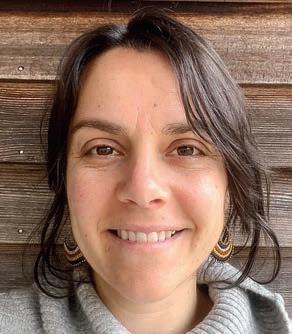
whether through STEM workshops for kids, skill building programs for adults, or increased community partnerships. Additionally, I’d like to explore ways to strengthen the library’s long-term sustainability, whether through fundraising initiatives, grant opportunities, or strategic planning.
What’s something you think voters should know about you?
Bailey: I believe that libraries are the hub of a community and one of the great treasures of mankind. Librarians are celebrities in my house. I look forward to the opportunity to serve on the Carpenter-Carse Library board

of trustees in Hinesburg. Please consider voting for me, thank you.
Burns: I feel very strongly that libraries are one of the most important community spaces for fighting disinformation and fostering community, literacy, and education in its many forms. As a mother of young kids, I’m committed to doing my part to make sure that CCL remains a space where all feel welcomed and seen, especially our youngest community members. I’m also committed to making sure that banned and challenged books remain accessible to all, via Little Free Libraries and beyond.
Fuoco: I have spilled coffee on a library book. I confessed and the
February 14, 2025
The Town of Charlotte is seeking proposals from contractors for mowing and land maintenance on various Town lands and the Charlotte Little League ballfields. Supporting materials for this request (details, maps, and a bid worksheet) are available on the Town’s website at www.charlottevt.org/jobs
Sealed Proposals are due by March 10th, 2025 by 4:00 PM and must be delivered either: Please direct any questions to townadmin@townofcharlotte.com
mail to:
Town Office “Land Maintenance Bid” P.O. Box 119 Charlotte, VT 05445
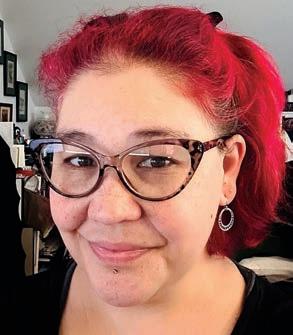
staff at the library were so wonderful and kind about it. I don’t recommend doing it yourself, but please know that it can, and does, happen to anyone.
Haskell: I’m taking this question as a fun fact: our home is from the late 1700s, early 1800s and we have an actual library in our house, which no surprise, is my favorite room. I read, on average, 75 books a year.
Holzer: I have lived in Hinesburg since 1986. I am one of the leaders of the Hinesburg Bone Builder Group, and an active member of the Senior group that meets weekly at the library. I am also one of the founders of the Song

Farmer musical jam that meets at the library on the first Thursday of every month.
Segovia Wise: As a mother of three young children ages 3, 4, and 8, and as a frequent library user of programs and services, I deeply understand the library’s importance in fostering learning, connection, and community growth. I believe that libraries are one of the greatest public resources available and should be supported as centers for literacy, technology access, and multi- generational community connection. Most importantly, I am always eager to listen, collaborate, and advocate for the needs of our community.
Town Office
Maintenance Bid” 159 Ferry Road Charlotte, VT 05445





















ILLUSTRATION BY ADELAIDE MURPHY TYROL
Jen Weimer
The Northeast has experienced significant ice storms throughout history, and we may be due for another one. Though we see icing in many winter storms, including recent ones, major ice storms cause widespread damage to forests and infrastructure, and occur in the northeast every 15 to 25 years.
Our most recent one was in 2008. However, warming climate trends are increasing the frequency and intensity of ice storms and shifting the risk to different regions and seasons.
Ice storms occur when rain falls during subfreezing temperatures, freezing to surfaces on contact. Ice accumulation can damage trees by causing branches to bend, crack, or break.
The severity of the damage depends on the amount of ice, wind, and the duration of the storm. Ice accumulation between one-quarter and one-half inch can cause small branches and weak limbs to break, while accumulations of one-half to one inch can cause larger branches to break.
Most tree damage from ice
storms occurs in hardwood stands. Softwood trees are more adept at bending under the weight of the ice, while hardwood branches break more easily. In the northeast, birch and maple sustain the most damage.
Damaged trees are susceptible to rot, which travels slowly from the damaged branches into the stem of the tree. Once injured, trees also become more susceptible to secondary stressors such as insects and disease pathogens. Though physical damage is immediately apparent, these other stressors can take decades to kill the tree.
A study at the Hubbard Brook Experimental Forest found changes in forest structure following an ice storm. Researchers found almost five times the number of branches fell to the ground than in a typical year. They also measured an increase in canopy openness that let two to three times more light into the forest.
The last major ice storm occurred in 2008 and affected southern New Hampshire, northern Massachusetts, Vermont and parts of Maine. The storm resulted in ice accumulation up to one inch, damaging hundreds of thou-
sands of acres of forests and causing power outages to over one million homes and businesses.
Just ten years earlier was one of the most devastating ice storms in New England’s history. The 1998 ice storm caused an estimated $1 billion in damage across the region, affecting over seventeen million acres. Ice accumulation in most areas was over one and a half inches, which caused widespread tree damage and massive power outages that lasted for weeks.
The 1998 storm had a significant impact on forests. Beech trees already weakened by beech bark disease were hit particularly hard. Sugarbushes in northern New York, where between two to four inches of ice accumulated, suffered damage to trees and tubing lines. This decreased the output for maple syrup production the following year.
According to the North American Maple Project, sugarbushes in Vermont were less severely affected than non-sugarbush maple stands with much smaller trees. Lower elevation sugarbushes with larger but fewer sugar maple stems were also more resistant to the storm.
The storms of 1998 and 2008
were notable, but not unusual. Early records show severe tree damage across New England from ice storms as early as 1886. The impact on infrastructure at this time was limited, however, due to sparse development and a lack of modern utilities. Significant regional damage also occurred in New England in 1921 with reports of road and rail disruptions. Only eight years later, another storm hit Massachusetts, Vermont, and New Hampshire particularly hard with widespread power outages.
In 1951, a multi-region ice storm affected New England, parts of the Midwest, and Canada. This storm heavily impacted forests and rural power, which led to the development of proactive tree trimming and vegetation management programs.
In 1973, another major storm affected New England and upstate New York, causing significant tree and infrastructure damage, especially in rural areas. These six major storms that occurred since 1921 happened every 17 years on average.
The recurrence of ice storms in the northeast reinforces the need for investment in resilient power grids as well as forests. Forests
can be made more resilient to ice storms by maintaining a healthy stand structure with varying tree ages and sizes. Cultivating and selecting single-stem well-formed trees with larger crowns and stronger stems produces trees that are less likely to suffer catastrophic crown loss.
Homeowners can also prepare for ice storms by pruning weak or poorly attached branches, removing deadwood, and ensuring trees have a strong central leader. If limbs are above power lines, consult your local power company or a professional arborist for removal. Consider inspecting trees for potential hazards now, before the next ice storm hits. By adequately preparing, we can give our trees and forests the best chance of good health in the coming spring.
Jen Weimer is a forest health expert, photographer, and writer living in the forests of New Hampshire. Illustration by Adelaide Murphy Tyrol. The Outside Story is assigned and edited by Northern Woodlands magazine and sponsored by the Wellborn Ecology Fund of New Hampshire Charitable Foundation: nhcf.org.